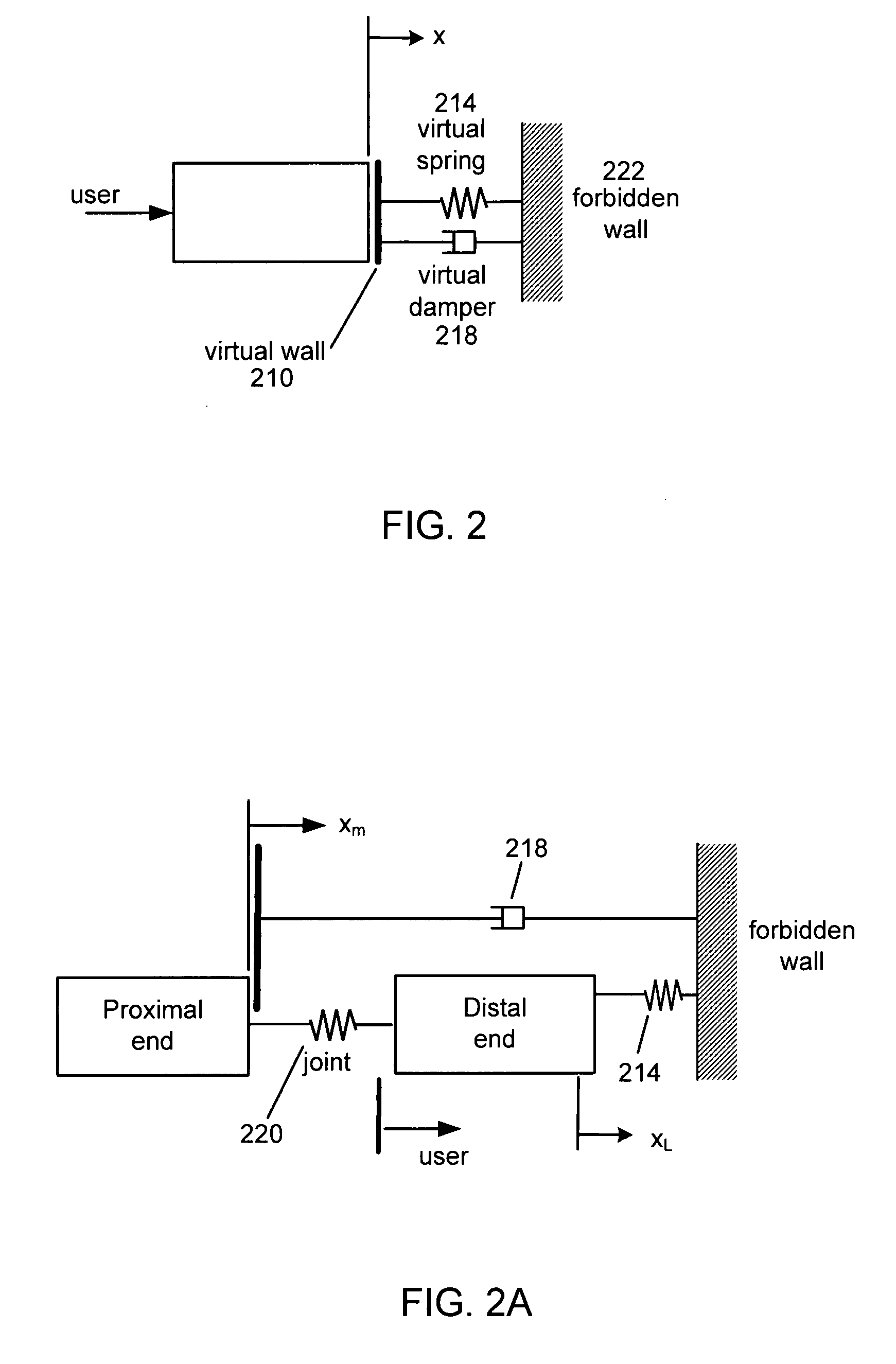Method and apparatus for controlling a haptic device
a haptic device and controller technology, applied in the field of haptic devices, can solve the problems of endpoint movement, large deleterious effect on haptic performance, and error between actual endpoints
- Summary
- Abstract
- Description
- Claims
- Application Information
AI Technical Summary
Problems solved by technology
Method used
Image
Examples
Embodiment Construction
[0027] Referring to FIG. 1, an embodiment of a portion of a cable drive haptic device of the invention is shown. The cable drive haptic device comprises an arm 100 that includes cable drive transmissions 114, 124, 134, 144, which are all backdriveable. For each transmission 114, 124, 134, 144, rotary actuators 110, 120, 130, 140 are positioned at one end of the respective transmission (i.e., the proximal or drive end) and joint links 116, 126, 136, 146 are positioned on the other end (i.e., the distal or load end) of the respective transmission. The arm 100 is equipped with four drive end sensors 112, 122, 132, 142 installed on rotary actuators 110, 120, 130, 140 as well as four load end sensors 118, 128, 138, 148 installed on joint links 116, 126, 136, 146.
[0028] In this embodiment, the cable drive transmissions provide a gear reduction so that smaller actuators can be used without introducing backlash, friction, or other non-linear effects that make control difficult. However, be...
PUM
 Login to View More
Login to View More Abstract
Description
Claims
Application Information
 Login to View More
Login to View More - R&D
- Intellectual Property
- Life Sciences
- Materials
- Tech Scout
- Unparalleled Data Quality
- Higher Quality Content
- 60% Fewer Hallucinations
Browse by: Latest US Patents, China's latest patents, Technical Efficacy Thesaurus, Application Domain, Technology Topic, Popular Technical Reports.
© 2025 PatSnap. All rights reserved.Legal|Privacy policy|Modern Slavery Act Transparency Statement|Sitemap|About US| Contact US: help@patsnap.com



